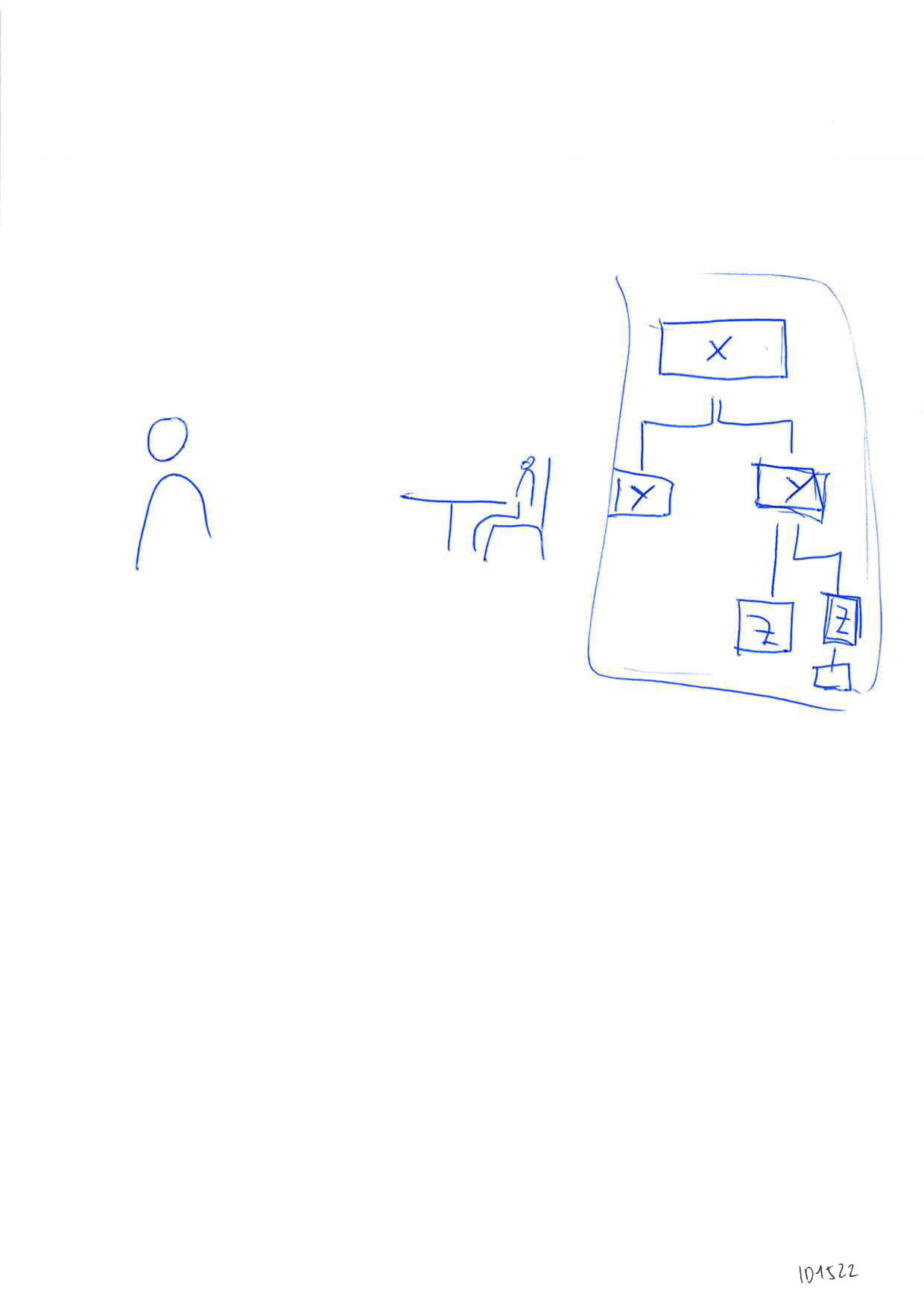An algorithm, drawn by a 27-year-old male PhD student in communication in Switzerland.

Yes, well then already the second and last task: Can you draw me how an algorithm works. hmh And this time I would let that go and you can explain what you are drawing while drawing Hmm, okay. Hmm [longer silence], okay... So I'll try to draw it like this...[longer silence] I'm just thinking about a nice picture to see if I can think of anything... I'd say we imagine a waiter in a restaurant and a guest. Here we have a waiter and at the table sits the guest, who wants to order something to eat but doesn't know what to order and is in this restaurant for the first time and can't imagine what could be good there. Therefore he asks the waiter what he would recommend. Of course the waiter doesn't know either, there is a guest sitting there who could find all kinds of things great. Therefore the waiter asked first: Do you prefer meat or vegetarian? And then he says... This is the first decision the guest has to make. Then the guest says: Um, I only eat vegetarian. Then the waiter asks again: Would you prefer something from the region or something exotic? Then the [guest] says: Something exotic. Then I have the second decision here and then we come to for example. That's X and Y? Right, that's... No, that's two Y's, or variables, as it were. Then comes the next decision: Yes Asian or maybe South American? Next, we have another variable where we can insert something. So and the waiter, who - we have here so different placeholders for different data which can be inserted. The waiter remembers now these preferences of the customer and knows now he eats only vegetarian and preferably something from far away countries but that should be Asian. So this is the data that will be inserted in these placeholders. So and now, this is the scheme after the waiter can now make decisions about what the guest wants to have for the next time or the next course for a dish. Because now the guest would like to order a second course and the waiter knows, ah he has determined, he already has data available yes, he already has data that he can enter into his algorithm - his scheme. Namely: Vegetarian, Asian, the waiter can already start here and say I recommend sesame balls or something like that for dessert. Okay Yeah, right. And the algorithm is in this whole concept, what is it? The algorithm is, so to speak, the recommendation aid, the decision aid for the waiter, the customer, to serve the guest a product or in this case a dish that he or she likes very much. Okay, great. Where does your knowledge of algorithms come from? Um, phew... Good question. Read, reviewed by documentation, uh, yes. I can't really be too specific. So multiple sources? Multiple sources... But, um... So out of interest, did you actively research it or did you stumble upon it? Did it just cross your path? Er, something in between, probably. Okay Well, in college, and yes... at work. Did you have concrete courses on this in your studies? No, I did not. Okay I don't think so. No, but of course it was in the media, the subject kept coming up. Filter bubbles, for example, and that's why, I just wanted to deal with it, what's behind it? Is that really a problem? How does it actually work? It was also explained in the news for example and on television then Okay, and in your everyday life now, do you come into contact with algorithms? Is that where the issue comes up? Uhm, yes, just as a concerned, as Facebook and Twitter user and so on and notice how other scientist accounts are recommended to me on Twitter for example and now not somehow, any stars Okay, cool, great. Thanks a lot.